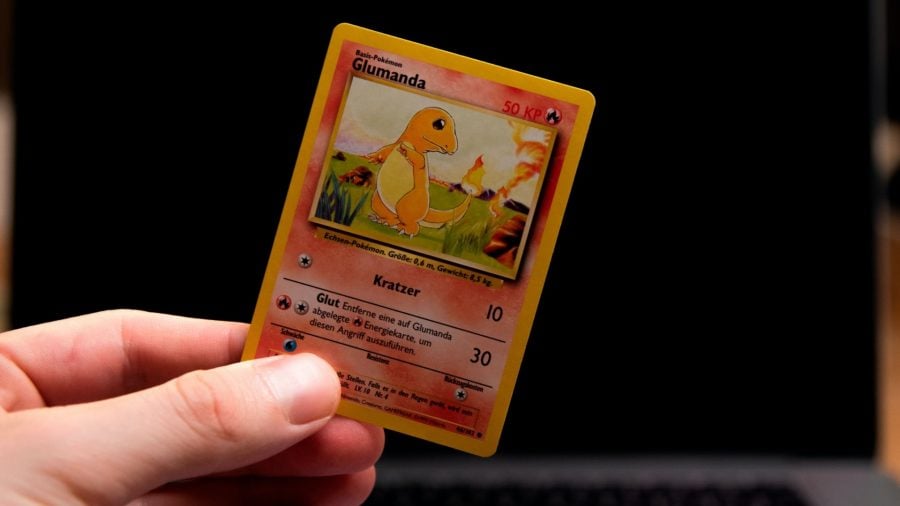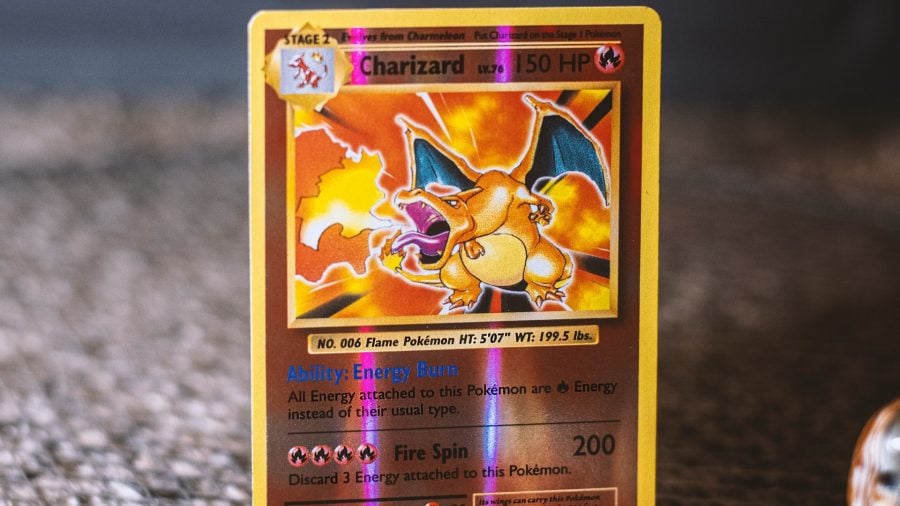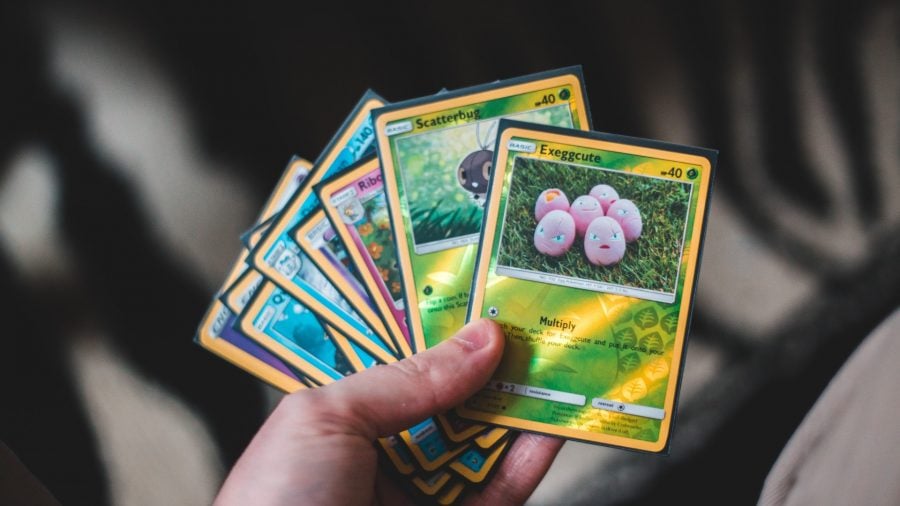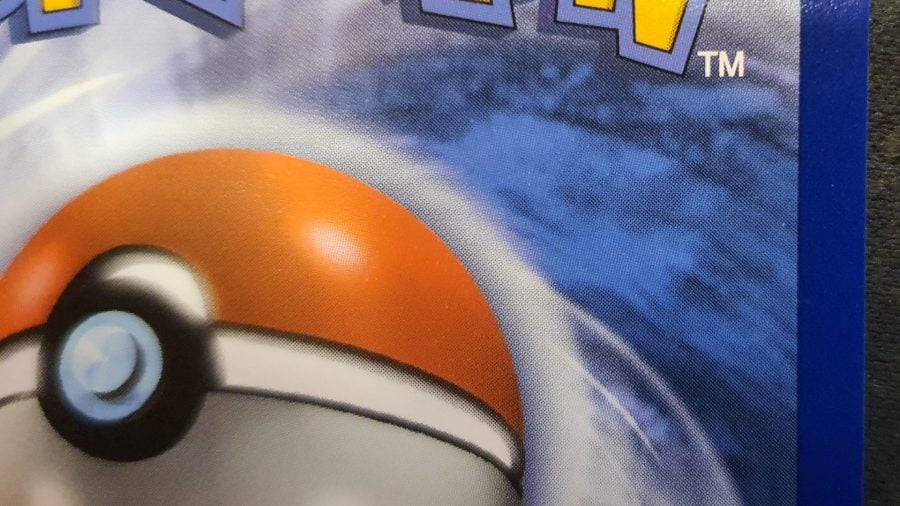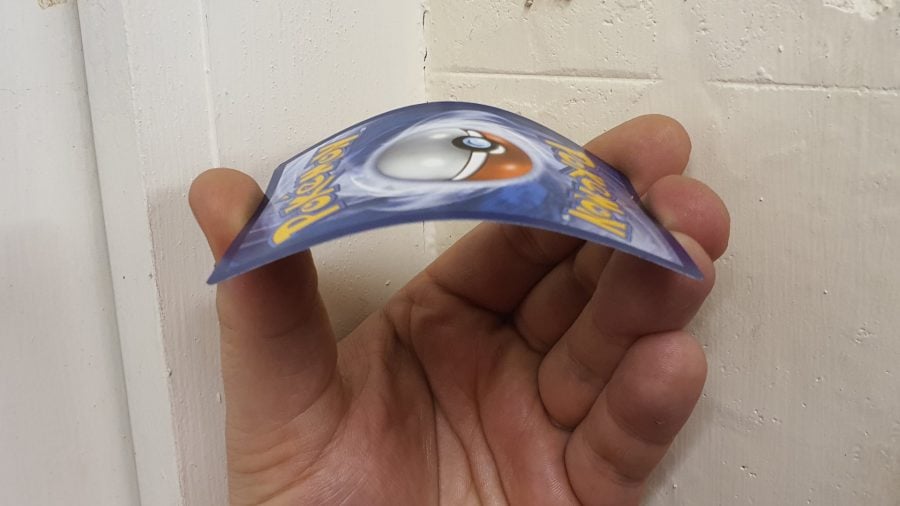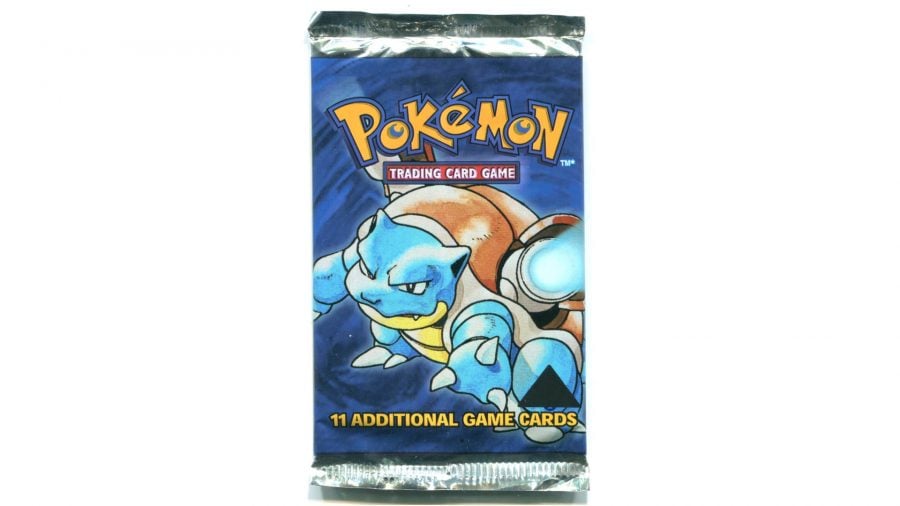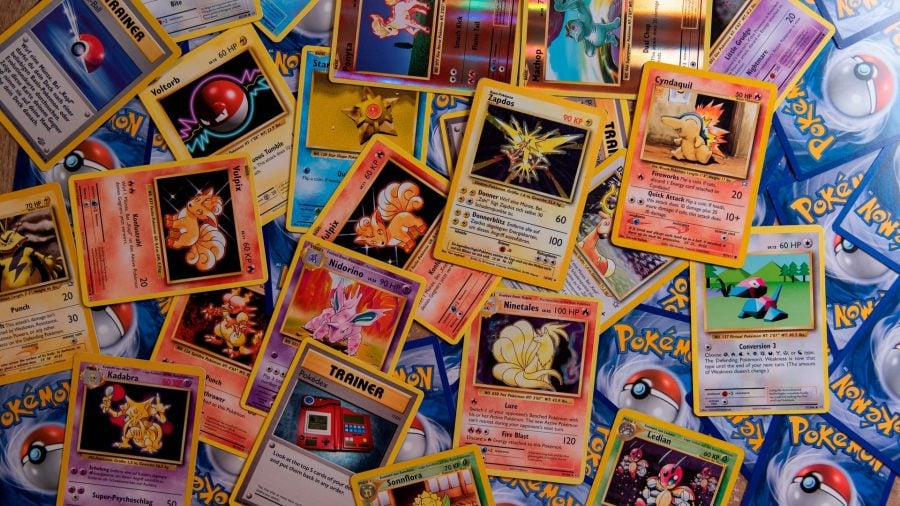Pokémon TCG players of old all share versions of the same, tragic memory, and it goes something like this. You’ve scored the perfect trade. Someone at school was willing to hand over the shiny Alakazam you’ve wanted for what seems like forever, in exchange for your duplicate Growlithe. A win-win. You make the swap, and spend the rest of the day mooning over the splendid new gem in your collection, until your friend leans over and says “oh wow, that’s definitely a fake.”
Tears. Devastation. The end of all things. But, worse than that, how do you know if they’re right? It looks real. You’ve heard if you peel the card open a bit, there’s a layer inside that proves it’s real, but you’re not about to bisect your new Alakazam in a hurry. And so you’re forever in limbo – not knowing. Fast forward to 2021, and Pokémon TCG is larger than ever, collected and played by tens of thousands around the world, over 25 years after they first made the trip from Japan to the west. The market for rare Pokémon cards is so developed that there are vast lists of rare cards and misprints that fetch hundreds of thousands, or even millions of dollars at auction.
And yet the spectre of counterfeit cards is still there, looming over every new pack, sleeved single or second-hand collection you pick up. Now, just as in the playground all those eons ago, Pokémon TCG players have to be vigilant for the signs of fake Pokémon cards, seeking out and unmasking these usurping cardboard doppelgangers at every turn.
To that end, we present Wargamer’s guide to identifying fake Pokémon cards – and, just maybe, scoping out a misprint that could make you rich. Just so we’re clear: this guide isn’t the same as professional advice from a TCG dealer – we’re just laying out the bare essentials to pinning down a fake. If you’re considering handing over serious cash for a rare card, we’d strongly recommend getting an expert to help identify it (more on that later).
So, to business. For starters, we’ll list the main methods, then we’ll dig into the detail below.
How to tell if a Pokémon card is fake
- Make sure you have some genuine cards on hand, for comparison
- Check if the printed details are correct – especially the Pokémon’s name, HP and damage values
- Check for printing errors on the card front – look out for typos, odd colouring, missing accents on the letter ‘é’ in Pokémon, and the size and positions of the energy symbols
- Check for printing errors on the card back – A large number of fake cards have a distinctive solid sweep of light blue colour to the top-right of the Pokéball art; on real cards, it’s dappled with dark blue
- Check the card’s material – compare the potential fake’s size, weight, flexibility and surface texture to a genuine card
- Do a light test – shine a torch at the card; fake cards often let through much more light
- Check if it’s a known misprint – They’re rare (and often valuable) but they do exist – so if you find only a minor abnormality, check it against an online list of misprints
Before we start, we’ll say it again: Conducting all of these steps properly requires that you’ve got a few real Pokémon cards on hand, for comparison.
They don’t have to be authentic copies of the specific card you’re testing (although that obviously makes spotting the differences much easier) – but it’s useful to have a selection of different card types, so you have a quick visual reference for what each element looks like on ‘the real thing’.
The big bucks: The rarest Pokémon cards in the world
This goes doubly if you’re testing holographic cards, where you can often spot a fake immediately by comparing the areas covered by the holographic foil (more on that later).
And with that, let’s get into the nitty gritty of those key steps, so we can start identifying some fakes, and sorting your actual shiny Charizard from the nefarious impostors hiding out in your collection.
CHECK THE CARD’S DETAILS
Name of the Pokémon
It may seem too obvious to mention, but, with all the identifying minutiae involved in counterfeit trading cards, it’s all too easy to overlook perhaps the biggest possible mistake: the actual card name.
Sometimes it’s simply a spelling error, sometimes the entire name may be totally incorrect. With nearly 900 types of Pokémon on the loose now (many of them sporting different names, depending on where you are in the world) it’s harder than ever for the casual punter to tell what’s a real Pokémon and what’s not – and that makes fakers’ jobs easier.
So, just you make extra sure your Blacephalon is titled Blacephalon, not Barcelonion, eh?
HP and Damage values
Likewise, fake cards may have obviously, absurdly incorrect numbers for the Pokémon’s HP or attack damage (if either is in the thousands, something’s up). In that case, it’s a dead giveaway you have a fake in your hands.
Even if the numbers aren’t self-evidently out of this world, you can still check the Pokémon TCG database to find the correct stat range for the card, and make sure yours matches up. If that fails, in a pinch, a google search will often turn up an authoritative picture of the authentic card to compare against – just make sure you’re confident in the photo’s source.
CHECK FOR PRINTING ERRORS ON BOTH SIDES
… On the card front
On the face of the card, of course, there’s a wide variety of elements to look out for that, if your card is a fake, could be anything from just a smidge off, to utterly out of whack.
Fonts – make sure all the fonts used are consistent with the ones on a real card. Fakes may have user different fonts in various spots (not just the large-type text) so check carefully.
Print quality – Compare the printing – especially all the card text – against the printing on a genuine card. If anything is noticeably blurrier or less sharp – especially the smaller-print text towards the bottom of the card – that’s a strong indicator the card is fake.
Spelling and punctuation errors – Look especially for any instances of Pokémon without the accented ‘e’, as this is a major red flag – but fake cards may have any number of other typos, too. Cast a keen eye over it all. Find one or more glaring errors, and it’s almost certainly a fake card.
Energy symbols – on fake cards, the small, circular energy symbols are often the wrong size or design, or in the wrong position. Typically, either the coloured circle, or the superimposed symbol, or both, may be printed too large. The positions may also not line up properly with the text below, or be out of symmetry.
Print year – genuine Pokémon cards have their print year and copyright printed at the bottom of the card. The exact position may vary between cards (remember to check the correct position on a real copy, or an authoritative photo of one), but, if it’s missing entirely, the chances are the card is a fake.
Print alignment – fake Pokémon cards will often have the card art printed off-centre, or on a tilt, against the card’s rectangular border, due to their cheaper, imprecise printing processes. Beware, though, that specific minor misalignments are present in some genuine misprints – guidance on that is below.
Colouring – generally, fake Pokémon cards tend to get the colours wrong on a variety of elements. If the colours look off, or out of place, anywhere on the card, compare it directly to a real one to confirm the difference. Pay close attention to the colours of the border and background (on both the front and back of the card). They should be sharply contrasting – if they blur or fade together, that’s a red flag for a fake.
Holographics – ordinarily, Pokémon cards have holographic foils only on certain sections of the card art (often only the main card image) – but this can vary depending on the type of card. Since ‘holos’ are rarer than other cards, if this is what you’re dealing with, it’s best to look up online which areas of the card should be holographic, and which shouldn’t; the Pokémon TCG database is a good place to start for this, but you might also find help from a friendly collector, dealer or via a collectors’ group on social media.
… And on the card back
Online TCG dealer The Card Bazaar says its number one method for spotting fake Pokémon cards is checking for irregularities in the Pokéball art on the back of the card.
According to the site’s own tips on identifying fake cards, “around 80% of counterfeits” can be identified purely based on the reverse card art being the wrong shade of blue (usually fakes are lighter blue than the real thing).
Pokémon journey: How to play the Pokémon TCG
More specifically, you’re almost certainly looking at a fake if the diagonal sweep of light blue colour immediately to the top-right of the Pokéball (i.e. the red hemisphere) is a solid, light or ‘washed-out’ blue colour.
On an authentic card, that diagonal sweep is dappled with the dark blue colour underneath – as in the photo above.
CHECK THE CARD MATERIALS
General feel
Experienced collectors tend to be able to sniff out a fake by the simple feel of the card – but it’s not because they’re actual wizards – it’s just because fakes, by their very nature, are usually made to a much cheaper print quality than the real thing, and as a result it’s very difficult to make them feel quite right.
Test the size and weight of the card against a real one; fakes will often be lighter, due to using lower-quality cardstock and fewer layers.
Feel the texture of the front and back of the card; authentic cards, while the textures can sometimes vary, tend to have a smooth, matte finish – whereas fakes tend to be glossy and shiny – partly as it’s cheaper, and partly to help hide any printing errors.
Finally, carefully bend the card a little, to feel the stiffness of the cardstock, and do the same with a real card. Chances are, if it’s a fake, it’ll bend easier, and feel a little flimsier.
The light test
There’s also the simple, yet trusted ‘light test’: get your card, grab a torch, turn off the lights, and shine the light directly at the card, then shine it at a genuine card for comparison. Given the aforementioned tendency towards fake Pokémon cards having thinner, poor-quality cardstock, they will let through noticeably more light than the real deal.
While you’ve got that torch on your genuine card, you might be able to see a reinforcing black layer, sandwiched between two white card layers. That extra layer is supposedly missing from almost all fake cards, and some collectors swear by this as a test (usually with the aid of a magnifying glass).
Quick draw: These are the best trading card games around
For our money, it’s a little too fiddly, when so many other methods are available – and brings back terrifying memories of childhood school friends trying to peel back the corners of their cards to find the magic black layer, and prove their authenticity. Shudder.
Right. Got all that? That covers all the main methods of identifying those pesky fake Pokémon cards among your collection – but there’s another side to this story…
MISPRINT POKEMON CARDS
If your card passes almost every one of these tests and appears practically perfect, but seems to be just a little bit off in one specific way – a single bit of text in a different order, for example, or one side border a millimetre or two thicker than the other – you may not have a fake, but rather a misprinted genuine card.
If you think you’ve got a misprint, first check it against an online list of known error cards
Also known as error cards, misprints are quite rare in the Pokémon TCG, but they have happened, and still do, occasionally, when some parameter or other gets set very slightly incorrectly on a given print run. Given their rarity, many misprints are incredibly desirable for Pokémon TCG collectors, and your card might be worth a decent chunk of hard cash! If you suspect you’ve got a misprint, the first thing to do is check your card’s characteristics against a database of known error cards – the best one we’ve found is at Bulbapedia.
Then, if your card matches the description of one of the known misprints, it’s time to seek out a trustworthy TCG dealer to check out your card, confirm your identification, and value it. Misprints are like winning the fake-Pokémon-card-spotting lottery, so good luck on your quest!
OTHER TIPS FOR IDENTIFYING FAKE POKEMON CARDS
There are many different production methods for fake trading cards, including Pokémon TCG cards, each with their own tell-tale signs that differentiate the product from the genuine article – which means no one guide to identifying fakes can contain every possible red flag. Here are a few pointers on what to do if you’re not sure about a card.
If, for some reason, you’re looking at a Pokémon card to buy, but you can’t physically hold and inspect the card for yourself (for example, if there’s a global pandemic, the shops are shut, and you can’t go within two metres of another person), always ask the seller to take an original, high quality photo of both sides of the card for you. This should let you carry out all but the material-based tests, and allows a good deal of confidence the card is real.
The old guard: How to build a Magic: The Gathering deck
In general, however, we wouldn’t recommend buying rare, valuable Pokémon cards remotely, without the chance to examine them in person before you pay. These can cost an arm and a leg, and if you’re serious enough about your prized collection to invest the sums required, it’s worth waiting for the opportunity to check the card out properly, with your actual, real live hands and eyes.
Still, if you’ve tried all the above tests on a card you own – or one you’re looking to buy – and you’re still unsure whether it’s the genuine article, it’s always a good option to get in touch with a reputable dealer of collectible cards, who might be able to give you an expert opinion.
If you’re new to the Pokémon TCG – or looking to get back into it after a long hiatus (whether on tabletop or online) check out our guide on how to play the Pokémon TCG. Alternatively, check out the dearest cards available in our guide to the rarest Pokémon cards. Or, if you’d rather cast your card-battling net further, try our list of the very best trading card games.
Source: Wargamer




